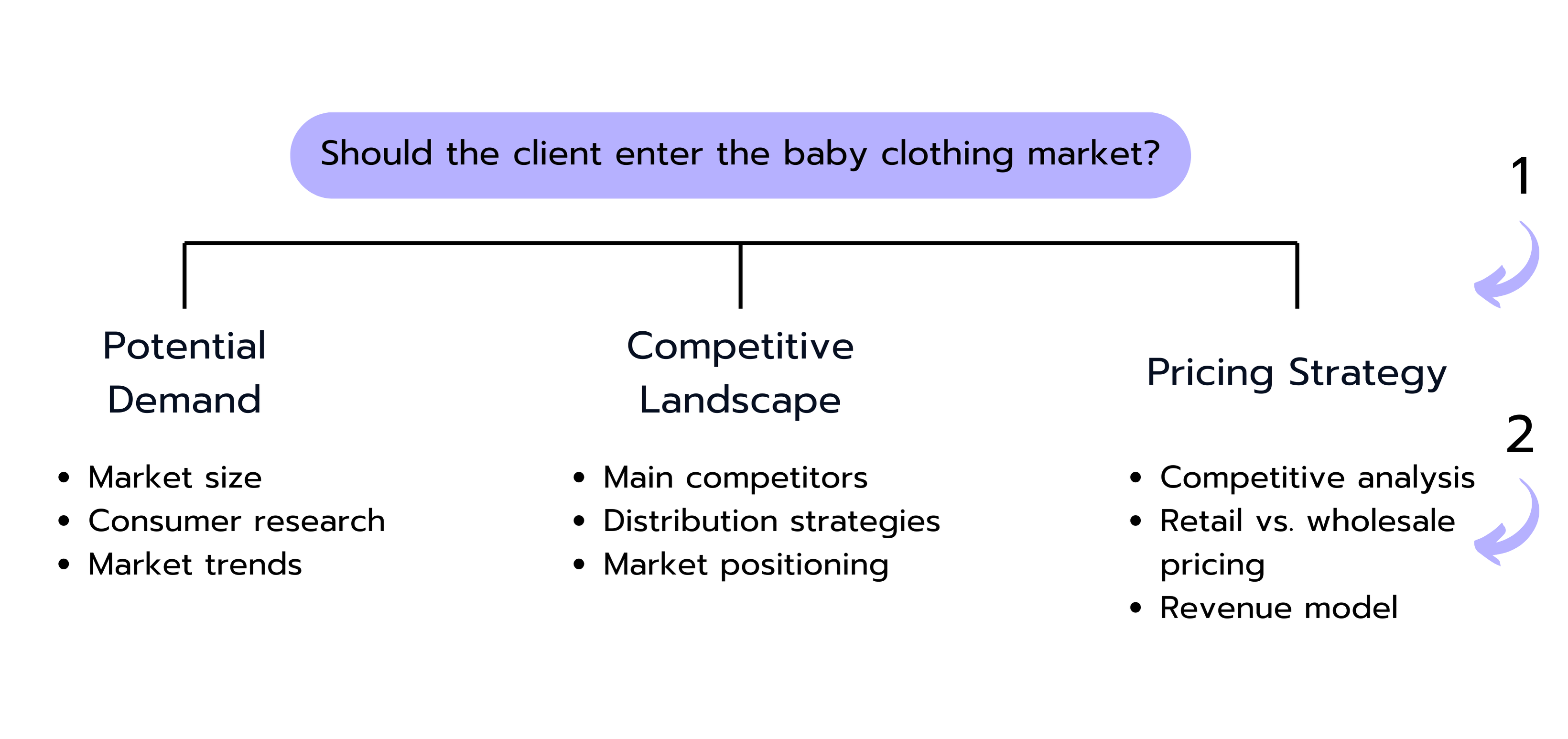To be convincing in case interviews, it is important not only to have a well-thought-out structure, but also to communicate it clearly and effectively. Here is a guide on how to achieve this using a top-down approach. We will provide helpful tips and approaches using the following case study example! 🚀
How to Communicate Your Structure
Case Prompt:
"Our client is a consumer goods company looking for growth opportunities. They are considering extending their existing baby products brand to a new product category - baby clothing. They expect this business to generate over 300 million USD in annual revenue from the first year. Should our client enter the baby clothing market?"
👉 By the way, you can solve the entire case here:
Start with an Overview
Begin with an overview of your main points or "drivers" that will guide your analysis. These serve as a roadmap for the discussion and show the interviewer where your argument is headed. For example: "To support the decision on whether our client should enter the baby clothing market, I will examine three main areas: potential demand, competitive landscape, and pricing strategy."

Use a Two-Loop Method
First Loop: Provide an overview of your main drivers without going into detail. This gives the interviewer a clear understanding of your structure. For example: "First, I will analyze potential demand, then the competitive landscape, and finally the pricing strategy."
Second Loop: Then, go into detail for each area.

Potential Demand:
Market size for baby clothing in the US: approx. 4 billion USD.
Consumer research shows high purchase intention for our client's brand.
Analysis of target audience preferences and market trends.
Competitive Landscape:
Identification of main competitors and their market shares.
Evaluation of distribution strategies (direct to consumer vs. wholesalers).
Analysis of the positioning and market strategies of the main players.
Pricing Strategy:
Establishing a realistic price level based on competitive analysis.
Considering retail and wholesale prices as well as margins.
Creating a revenue model under different pricing strategies.
Label Your Explanations
Use clear transitions and section labels. "First, we will consider the potential demand for baby clothing. Next, we will look at the competitive landscape. Finally, we will discuss the pricing strategy."
Refer Back to Your Main Drivers
While explaining details, regularly refer back to your main drivers. "To understand potential demand, let's first look at market development and consumer preferences."
Avoid Long Monologues
Many people tend to dive straight into the details of the first point without giving an overview. This often leads to long monologues, and the listener loses track. By outlining the structure from the beginning and systematically working through the points, the flow of the conversation remains clear, and the listener stays engaged. "Through structured analysis, we can ensure that we cover all relevant aspects without getting sidetracked."
💡 A clear structure and balanced communication make your argument understandable and convincing. By following the above steps, you can ensure that your structure is communicated clearly and effectively in case study interviews.
Are you currently in the midst of preparing for your case interview?
We're here to assist. Here are some additional insights on structuring and getting ready for your interview:
👉 Preparation for Case Studies
👉 Note-taking in Case Interviews
Do you want to solve more cases on various topics like Market Entry, New Product, or Restructuring? In our Case Library, we have over 240 cases for you! Take a look. 🚀